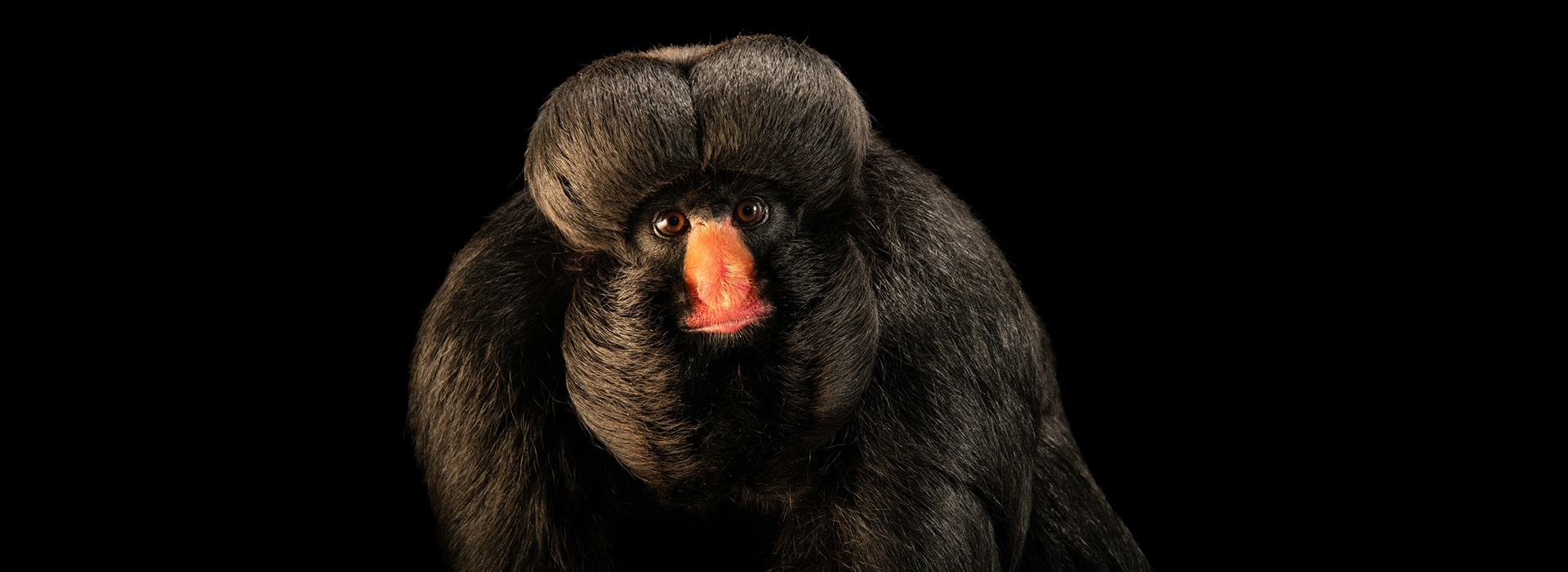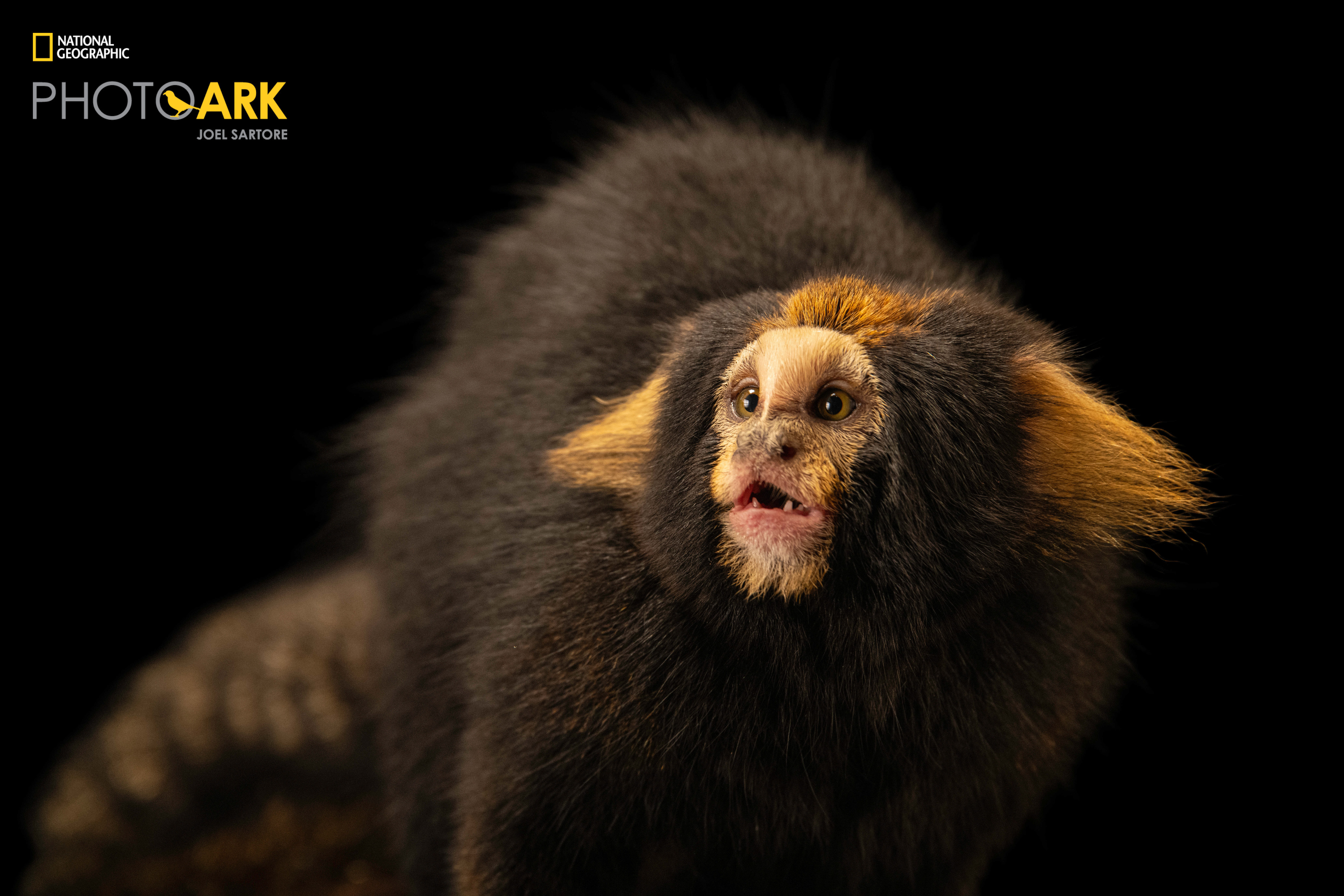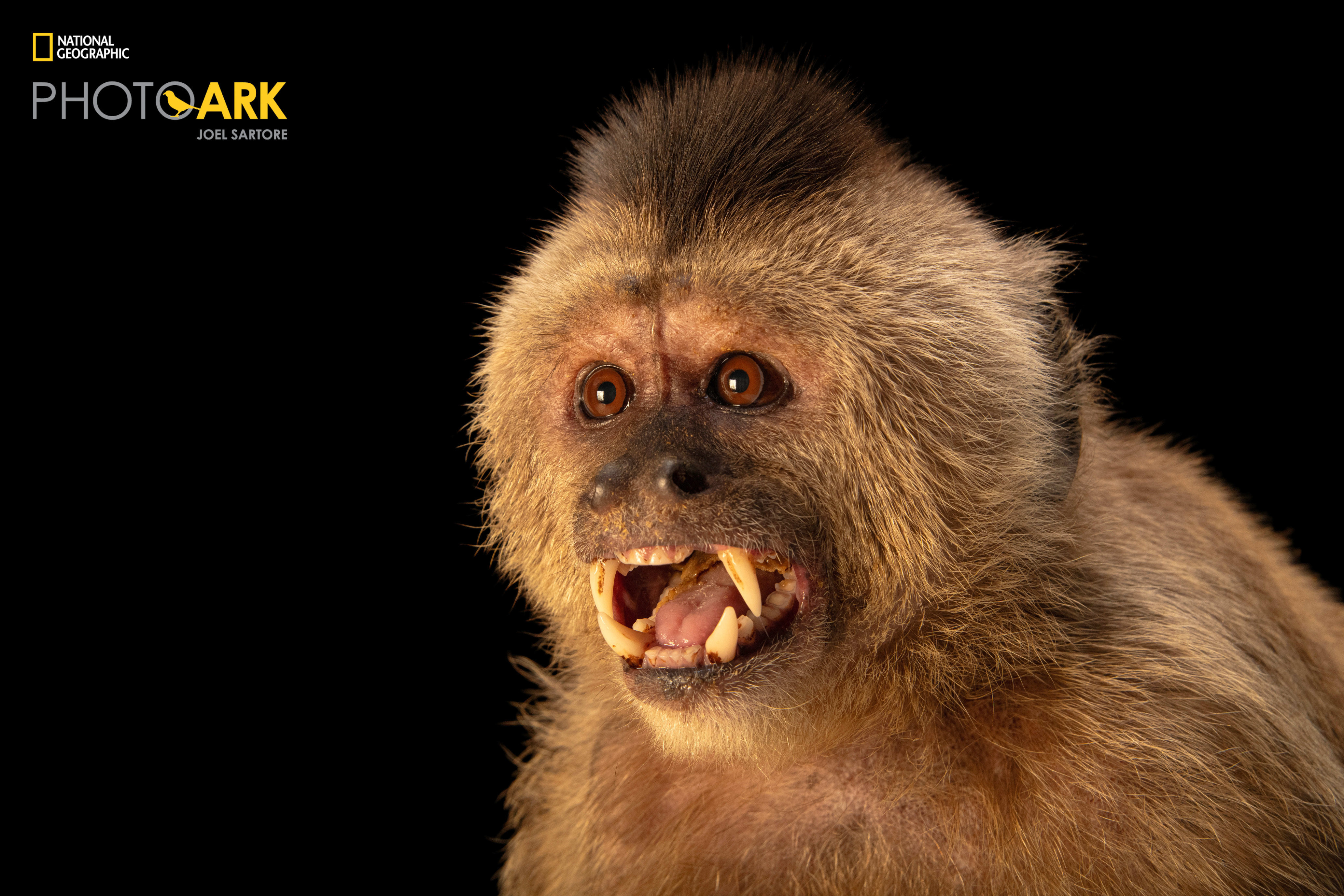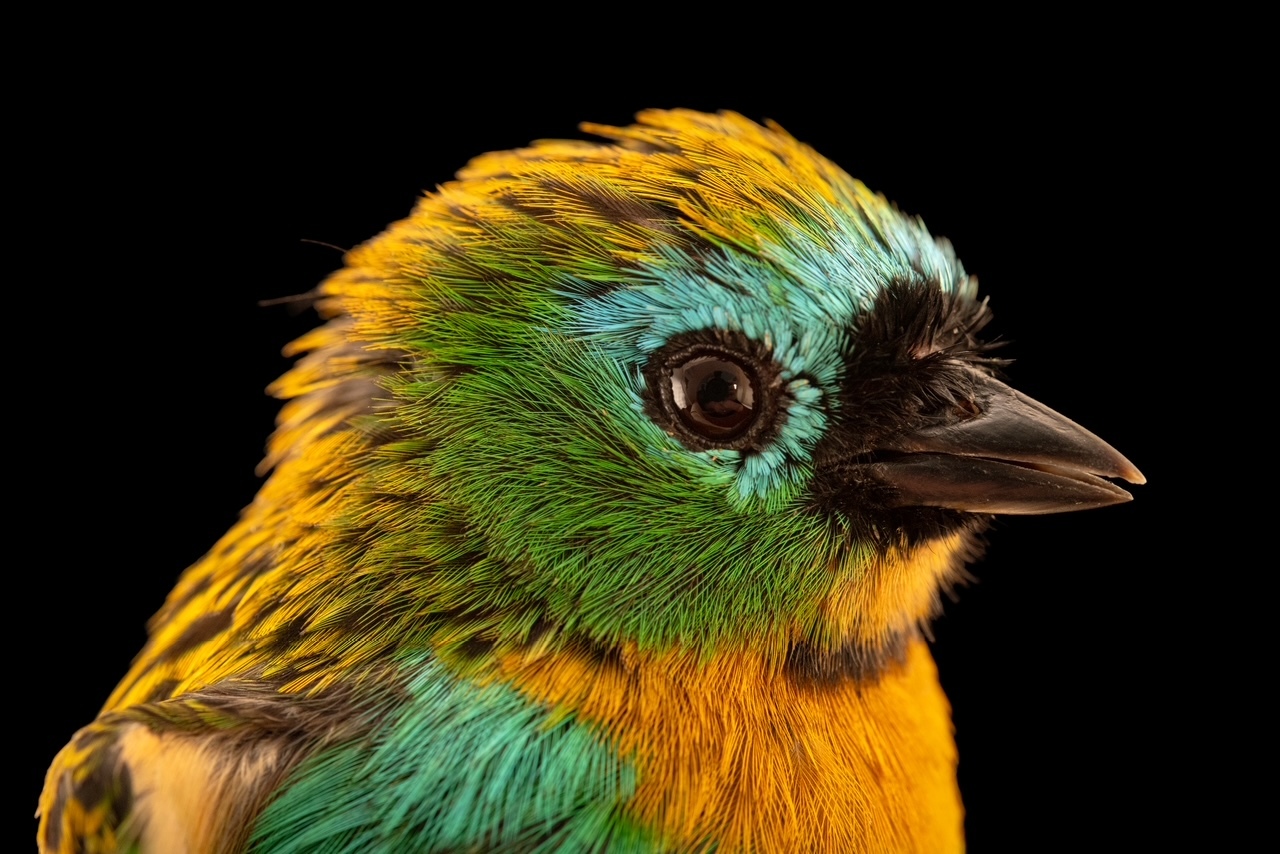
Most people think that the Photo Ark is exciting! And Fun!
After all, we get to fly to far away places, eat exotic meals and meet wondrous animals galore, right?
All true, but it’s not vacation. It’s work. Usually we leave our hotel in the dark and return in the dark. At the end of a hot day working with primates, we’ll often wash our clothes in the shower or they’ll stink up the room. The best part of each day is dinner, though that can be unpredictable as well.
And to think it all starts by dividing up the world.
I have two taxonomic advisors who help me find species around the globe. First there’s Pierre de Chabannes, a French count who knows nearly all the species in human care across western Europe, the UAE, China, the South Pacific, and Southeast Asia, especially Vietnam, Cambodia, Malaysia, and Indonesia.
Next is Dr. Nayer Youakim who lives in England. He’s an ear, nose and throat surgeon who once talked to me on the phone right after treating a drunk bar patron who had a dart stuck in his neck. Nayer really knows the zoo animals of South America, the United Kingdom, the Middle East, Japan and India. He does all this on top of his day job.
My territories are North America, Central America, Australia, Hawaii, the west side of the Andes, New Guinea and New Zealand.
So together, we feel like we’ve got the world covered in terms of the species kept at zoos, aquariums, wildlife rescue centers and private breeders.

Which brings me to Brazil.
Nayer has been going there for years, and knows the most obscure places, like the deer study lab at a university where a professor hand-raises various species of deer and photographs them in a room with mug-shot-style height marks on the wall to track their growth rates. Or the husband-wife team who have been studying worm lizards for decades.
I also brought in Tatiane Feres, a brilliant yet high strung Brazilian producer who hugs everyone, including taxi drivers. She’s never met a stranger, and is fabulous at lining up all the places we need to shoot, but as her anxiety grew throughout our trip, she started to crave cigarettes. By the end, she was chain-smoking.
I’d also brought along my 31-year-old son, Cole. He’s been going with me on Photo Ark shoots for 19 years and knows how to light things better than I do. Best of all, he’s not wound tight, and has a calming effect over the rest of us.
Nayer’s game plan for Brazil: We would spend three weeks there, flying six times within the country to get to 20 locations. Our primary targets would be monkeys. This is where the trouble started.
For those of you who haven’t spent a lot of time with monkeys, know that they are nimble and fast and strong and smart. All the things I’m not. They require special, sturdy enclosures to be constructed at each location so that, once shifted inside, they can’t get outside. We line the space with our backgrounds, let them in, and voila. What could possibly go wrong?
Well, for starters they sometimes poop and pee and push it around on our white backgrounds using their hands, feet and tails. Obviously they do not care that we’re with National Geographic. But since we always shoot as fast as possible (just a few minutes) to reduce stress on the animals, that tends to keep the smearing to a minimum.
But things don’t always go perfectly to plan, and there were two ‘incidents’ on this trip.
The first was a buffy-tufted marmoset that I’ll call ‘Vamprella’.
She only weighed one pound and was the size of a squirrel, but was much faster and conniving. She first chewed a hole through the side of my cloth shooting tent, which we quickly blocked with a gloved hand. Then she got behind both the black and white backgrounds and started digging her way out of the back. That’s when I foolishly reached down and, through the fabric, tried to gently encourage her to get in front of the backgrounds again.
As I slowly lifted the cloth lump that was Vamprella, I watched in slow motion as two bright white teeth stuck through the wall of the tent and deep into the middle finger of my right hand. I let out a yelp and commenced to bleeding all over everything.
Now don’t get me wrong, it’s kind of an honor being finger-punctured by one of the rarest primates on Earth, but once back in front of the backgrounds, Vamprella would not hold still, and kept unzipping the door on the front of the tent. I immediately declared the shoot concluded. We would obviously need a more resilient enclosure to try that particular monkey again.
But we weren’t done yet. We had four monkeys to go that day and, though I was still bleeding some, Cole encouraged me to get a move on. He has little sympathy for his dad.
From the monkey center, we then went to many bird parks, private collections, an aquarium, and a serpentarium where they collect venom to make snake bite antidotes.
One of our last stops was the Sao Paulo Zoo, which has the largest collection of animals in South America. This zoo was known for not only rare frogs and birds, but also for…you guessed it…monkeys. They had one blond capuchin, a species feared extinct until about 20 years ago, when a small colony was rediscovered in a remnant patch of Atlantic Forest. Folks fly in from around the world to see that one. She was sweet to photograph.
The next one was not.

The Ka'apori capuchin didn’t like people much as far as I could tell. He was large and all muscle, with huge white canines that he flashed every 30 seconds or so to prove he was boss. But the zoo had fashioned a sturdy shooting space for him. We lined it with white backgrounds and shifted the monkey in.
Over the next five minutes, we got into a routine; when he came close, I quickly leaned back and Cole covered the shoot hole with a plastic cover off one of my Elinchrom flash heads. The monkey seemed cool with that. But he wasn’t. He was acting, and we let our guard down. Sensing an opportunity, the monkey lunged forward and punched the front of my lens with his poop-covered hand. This rammed the camera into my face and snapped my head back, like I’d been rear-ended in traffic. Cole covered the hole, but the damage had been done.
Me: “That monkey hit me in the face! Did you see that? “
Cole: “No”
Me: “Did you hear that?”
Cole: “Yeah”
Me: “He really rung my bell!”
Cole (showing no sympathy, as usual): “You weren’t hit that hard. Keep shooting.”
I cleaned the monkey poop off my lens and started in again. And even though the monkey seemed to be laughing at me, we got our pictures and the monkey went home. We cleaned off the backgrounds with a big garden hose outside, then headed back to the hotel, in the dark, of course.
In the end, the pictures from Brazil turned out just fine, about 250 species in all; mammals, birds, reptiles, amphibians, fish and even a few insects we found outside here and there. We had documented some of the rarest birds on the planet like the blue-eyed ground dove, the Alagoas curassow, and the Brazilian merganser. We know that many won’t make it in the long run.
But at each stop we met such noble people, those who have dedicated their entire lives to animals that might not survive well into the future. They do it simply because it’s right. And they tell anyone who will listen why it is all so very important.
And every single time, I’m reminded that the Photo Ark exists to tell their stories as passionately as they do. To try and make the world a better place.

Joel is the founder of the Photo Ark, a groundbreaking effort to document species before they disappear—and to get people to care while there’s still time. The Photo Ark is honored to be supported by and grant-funded by National Geographic.
All images © Joel Sartore, 2025